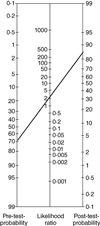Clinical immunology review series: an approach to the use of the immunology laboratory in the diagnosis of clinical allergy
- PMID: 18577028
- PMCID: PMC2432092
- DOI: 10.1111/j.1365-2249.2008.03695.x
Clinical immunology review series: an approach to the use of the immunology laboratory in the diagnosis of clinical allergy
Abstract
In the last 10 years UK immunology laboratories have seen a dramatic increase in the number and range of allergy tests performed. The reasons for this have been an increase in the incidence of immunoglobulin E (IgE)-mediated allergic disease set against a background of greater public awareness and more referrals for assessment. Laboratory testing forms an integral part of a comprehensive allergy service and physicians treating patients with allergic disease need to have an up-to-date knowledge of the range of tests available, their performance parameters and interpretation as well as the accreditation status of the laboratory to which tests are being sent. The aim of this review is to describe the role of the immunology laboratory in the assessment of patients with IgE-mediated allergic disease and provide an up-to-date summary of the tests currently available, their sensitivity, specificity, interpretation and areas of future development.
Figures



Similar articles
-
UK NEQAS survey of allergen component testing across the United Kingdom and other European countries.Clin Exp Immunol. 2017 Jun;188(3):387-393. doi: 10.1111/cei.12950. Epub 2017 Apr 19. Clin Exp Immunol. 2017. PMID: 28423454 Free PMC article.
-
The potential of component-resolved diagnosis in laboratory diagnostics of allergy.Biochem Med (Zagreb). 2018 Jun 15;28(2):020501. doi: 10.11613/BM.2018.020501. Epub 2018 Apr 15. Biochem Med (Zagreb). 2018. PMID: 29666553 Free PMC article. Review.
-
[Short history of laboratory diagnostics of allergy in Hungary, current possibilities and future perspectives].Orv Hetil. 2015 Aug 9;156(32):1275-80. doi: 10.1556/650.2015.30223. Orv Hetil. 2015. PMID: 26234308 Review. Hungarian.
-
The use of microarray and other multiplex technologies in the diagnosis of allergy.Ann Allergy Asthma Immunol. 2021 Jul;127(1):10-18. doi: 10.1016/j.anai.2021.01.003. Epub 2021 Jan 12. Ann Allergy Asthma Immunol. 2021. PMID: 33450398 Free PMC article. Review.
-
When allergies complicate allergies.Allergy. 2005;60 Suppl 79:14-8. doi: 10.1111/j.1398-9995.2005.00852.x. Allergy. 2005. PMID: 15842228 Review.
Cited by
-
Comparison of an automated microfluidic immunoassay technology (BioIC, lab-on-chips) and ImmunoCAP assay. Lab-on-chips as a tool for specific IgE (sIgE) detection.Postepy Dermatol Alergol. 2020 Feb;37(1):56-60. doi: 10.5114/ada.2020.93383. Epub 2020 Mar 9. Postepy Dermatol Alergol. 2020. PMID: 32467685 Free PMC article.
-
Comparison and clinical utility evaluation of four multiple allergen simultaneous tests including two newly introduced fully automated analyzers.Pract Lab Med. 2016 Jan 21;4:50-61. doi: 10.1016/j.plabm.2016.01.002. eCollection 2016 Apr 1. Pract Lab Med. 2016. PMID: 28856193 Free PMC article.
-
Enhanced sensitivity of capture IgE‑ELISA based on a recombinant Der f 1/2 fusion protein for the detection of IgE antibodies targeting house dust mite allergens.Mol Med Rep. 2019 May;19(5):3497-3504. doi: 10.3892/mmr.2019.10050. Epub 2019 Mar 18. Mol Med Rep. 2019. PMID: 30896856 Free PMC article.
-
House dust mite allergy in Malaysia: review of research gaps in the current scenario and the way forward.Exp Appl Acarol. 2023 Dec;91(4):509-539. doi: 10.1007/s10493-023-00857-5. Epub 2023 Nov 23. Exp Appl Acarol. 2023. PMID: 37995026 Review.
-
Clinical immunology review series: an approach to the patient with anaphylaxis.Clin Exp Immunol. 2008 Jul;153(1):1-9. doi: 10.1111/j.1365-2249.2008.03694.x. Clin Exp Immunol. 2008. PMID: 18577027 Free PMC article. Review.
References
-
- Sewell WAC, Dore PC. Premature testing of allergen-specific IgE post-anaphylaxis may cause false negative results. J Allergy Clin Immunol. 2004;113:S241.
-
- Bennich H, Ishizaka K, Ishizaka T, Johansson SG. A comparative antigenic study of gamma E-globulin and myeloma-IgND. J Immunol. 1969;102:826–31. - PubMed
-
- Ceska M, Lundkvist U. A new and simple radioimmunoassay method for the determination of IgE. Immunochemistry. 1972;9:1021–30. - PubMed
-
- Wide L, Bennich H, Johansson SG. Diagnosis of allergy by an in-vitro test for allergen antibodies. Lancet. 1967;2:1105–7. - PubMed
-
- Ewan PW, Coote D. Evaluation of a capsulated hydrophilic carrier polymer (the ImmunoCAP) for measurement of specific IgE antibodies. Allergy. 1990;45:22–9. - PubMed
Publication types
MeSH terms
Substances
LinkOut - more resources
Full Text Sources
Medical

